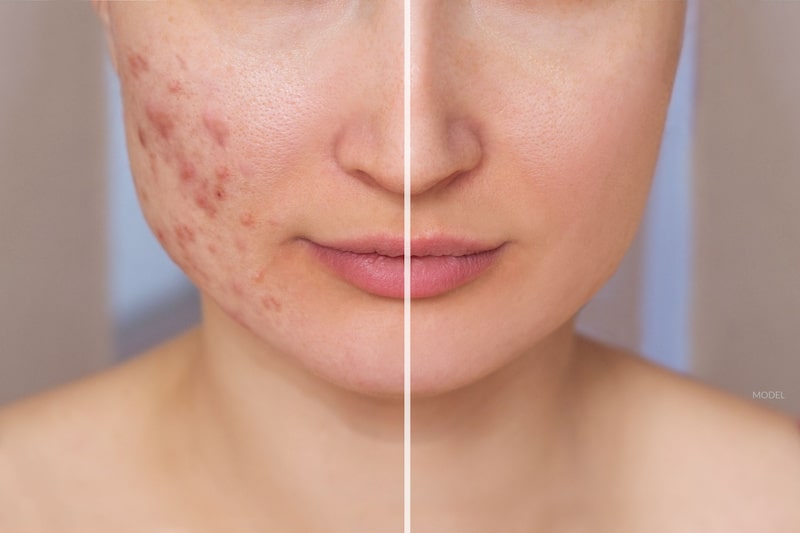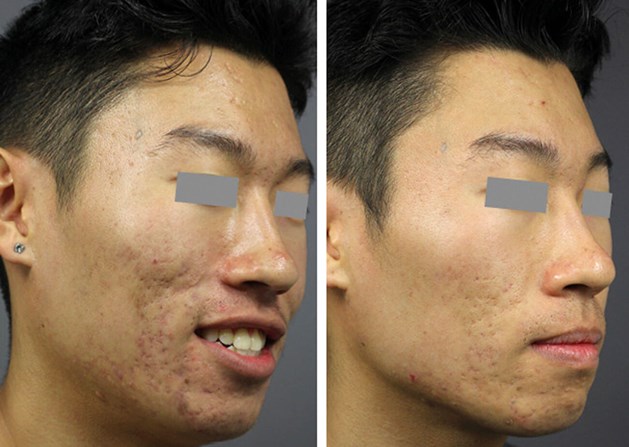Recognizing the Different Skin Disease and Effective Therapy Alternatives for Acne Scars
Acne marks stand for a complicated interaction of skin problem that significantly effect people' self-esteem and general skin health and wellness. Recognizing the distinct sorts of acne marks-- atrophic and hypertrophic-- together with their underlying causes, is crucial for figuring out reliable treatment techniques. Various healing options exist, ranging from sophisticated skin-related treatments to all-natural solutions. Nevertheless, the efficacy of these treatments usually depends upon customized evaluations by qualified specialists. As we check out the landscape of acne scar administration, it comes to be evident that the journey toward clearer skin might include even more than simply topical options.
Sorts Of Acne Scars

On the other hand, hypertrophic marks result from an overflow of collagen during the healing process, bring about elevated locations on the skin. These scars are usually firm and can differ in shade, in some cases showing up red or darker than the bordering skin.
Comprehending these sorts of acne scars is crucial for establishing a reliable treatment plan - acne scars. Choices might consist of chemical peels, laser treatment, microneedling, or dermal fillers, tailored to the specific scar type. A complete consultation with a dermatologist can help establish one of the most appropriate intervention, considering the person's skin type, scar seriousness, and overall skin health
Root Causes Of Acne Scarring
Scarring happens as an outcome of the body's all-natural recovery feedback to swelling and injury triggered by acne lesions. When acne types, it activates an inflammatory action, bring about the release of various cytokines and growth elements that promote healing. However, this procedure can occasionally lead to extreme tissue formation or insufficient repair service, resulting in scars.
The key root causes of acne scarring include the seriousness of the acne itself, duration of the sores, and individual skin kinds. Extreme inflammatory acne, such as cysts and nodules, is most likely to result in scarring due to much deeper tissue damage. In addition, improper handling of acne sores, such as selecting or pressing, can intensify tissue injury and swelling, boosting the probability of scarring.
Hereditary tendency also plays a significant duty; individuals with a family members background of scarring go to a higher threat. Moreover, skin type and color can influence mark formation, as darker complexion might experience post-inflammatory hyperpigmentation, while lighter skin may establish atrophic scars.
Ultimately, recognizing these causes is essential in taking care of acne and minimizing the possibility for scarring.

Therapy Choices for Scarring
Effective therapy choices for acne scarring vary depending upon the type and severity of the marks. Typically categorized right into atrophic, hypertrophic, and keloid scars, these conditions call for tailored approaches for ideal results.
For atrophic marks, which are defined by a loss of tissue, therapies such as chemical peels, microdermabrasion, and laser treatment are commonly used. These techniques advertise skin revival and promote collagen production, therefore enhancing skin texture. Subcision, a minimally invasive treatment, can likewise work by separating fibrous bands under the skin.
Keloid and hypertrophic marks can be more testing to treat. Alternatives consist of corticosteroid shots to minimize swelling and flatten the marks. In some cases, cryotherapy or laser therapy may be advised to reduce their look.
Surgical options are readily available for severe scarring, where excision or skin grafting might be essential. It's vital for people to seek advice from with a dermatologist to examine their details scar kind and discuss the most ideal treatment plan. Combining several treatments often produces the very best outcomes, ensuring that each client's distinct skin problem is dealt with successfully.
Home Solutions and All-natural Solutions
All-natural solutions and home treatments can supply an available method for people seeking to improve the appearance of acne scars (acne treatment for sensitive skin). Numerous ingredients discovered in the home kitchen area have shown prospective advantages in boosting skin appearance and advertising recovery

An additional reliable alternative is lemon juice, which serves as an all-natural exfoliant and can lighten hyperpigmentation. Nonetheless, it ought to be made use of meticulously, as it may cause photosensitivity. Oatmeal masks are additionally helpful; their gentle peeling can help get rid of dead skin cells while calming irritation.
Essential oils, such as tea tree oil and lavender oil, can Visit Your URL additionally support scar recovery due to their antimicrobial residential or commercial properties. It is important to perform a spot examination before applying any kind of treatment to make certain there are no unfavorable responses. These natural services can be a corresponding method in the trip to lessen acne marks.
Stopping Future Scarring
Adopting an aggressive approach to skin care can significantly lower the threat of establishing future acne scars. One of the vital methods is to take care of acne properly as it develops. This entails using Homepage non-comedogenic skincare items and drugs recommended by skin doctors that target acne without aggravating the skin. Normal cleansing, peeling, and hydration can aid maintain skin health and wellness and protect against clogged pores.
In addition, staying clear of the temptation to choose or squeeze acne lesions is vital, as this can cause inflammation and subsequent scarring. Instead, people should concentrate on applying topical therapies that advertise healing and decrease inflammation. Components such as salicylic acid, benzoyl peroxide, and retinoids are understood for their effectiveness in managing acne and minimizing marks.
Sun defense is one more important part; direct exposure to UV rays can restrain and dim scars healing. Making use of a broad-spectrum sunscreen daily can alleviate these impacts.
Lastly, keeping a healthy diet plan rich in antioxidants and staying hydrated supports skin regrowth. By applying these safety nets, people can significantly decrease their risk of future scarring and promote general skin health.
Verdict
In final thought, a thorough understanding of acne scars, incorporating both atrophic and hypertrophic kinds, is necessary for efficient treatment approaches. Examination with a skin specialist continues to be critical to develop customized strategies that think about private skin types and mark extent, inevitably enhancing the effectiveness of scar monitoring techniques.
Acne marks represent a complex interplay of skin conditions that considerably effect individuals' self-esteem and total skin health. The two key categories of acne scars are hypertrophic and atrophic marks. These marks are more classified right into 3 subtypes: ice choice marks, which are slim and deep; boxcar marks, which are broader and have distinct edges; and rolling marks, which produce a wave-like look due to uneven skin structure.
A complete examination with a skin doctor can aid determine the most appropriate treatment, taking right into account the person's skin kind, scar my company intensity, and general skin wellness.
Consultation with a dermatologist continues to be important to design personalized approaches that take into consideration individual skin types and mark severity, ultimately improving the efficacy of scar monitoring methods.